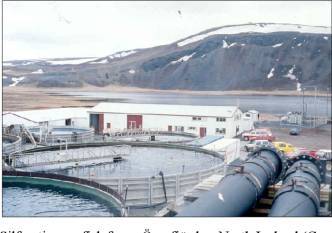ZAMBIA, 28 February 2022: Prospero, a UK-based investor, has partnered with Kalahari GeoEnergy to implement a project to develop direct applications of geothermal heat in Zambia. The first project to come out of this partnership will be aquaculture farms.
Zambia has taken steps toward utilizing its geothermal resources. Additionally to generating electricity, Kalahari GeoEnergy wants to use underground heat for a variety of purposes. The collaboration is aimed at setting up a geothermally heated aquaculture complex.
The project recently underwent a pre-feasibility study that concluded that geothermal heat could be used directly for fish and fingerling production, aquaponics (a system that combines plant cultivation and fish farming), crop drying and processing, and chicken production. As a first step, both partners are focusing on aquaculture in order to reduce Zambia's imports of fish.
Reducing fish imports from China and India
According to the 2017 Department of Fisheries report, in 2016, fish imports into Zambia were estimated at 126,345 metric tons, compared to 77,199 metric tons recorded in 2015. This fish is imported from China and India. According to Prospero, aquaculture is a priority for investment to meet the country's consumption deficit and to take advantage of export opportunities to countries in Eastern and Southern Africa.
The heat will ensure adequate temperatures in the fish farms. The steam will be produced from geothermal wells around the Bweengwa River. This geothermal resource area covers the southern part of Lochinvar National Park. The steam will therefore be transferred to the project site in the town of Monze in the Southern Province.
“The use of geothermal energy for agricultural applications has the potential to contribute to job creation, improve access to energy and diversify economic activities in rural areas,” Prospero stated. Its partner Kalahari GeoEnergy plans to use some of the heat from the Bweengwa site to generate electricity through a pilot project that will see the installation of a 15 MWe steam plant.
Image credit: semanticscholar.org




















